- Outer Worlds vs Fallout New Vegas Compared - January 10, 2023
- Fallout vs Metro Compared - January 1, 2023
- Fallout 4 Frost Mod Guide - May 6, 2022
Fallout: New Vegas was developed by the legendary RPG development studio Obsidian Entertainment. It was released in 2010. It was the second series entry released after its purchase by Bethesda, which started with Fallout 3.
New Vegas has built a cult following, as many Fallout fans consider it the best release in the entire series, with myself among them. Despite this it seemed unlikely that Obsidian and Bethesda would ever work together again after pay disputes, which was very disappointing for fans like me.
This made the announcement of The Outer Worlds in 2019 very exciting for me. It is a spiritual successor to Fallout: New Vegas, which looked to have a ton of potential even from its reveal trailer. Now that both games have been out for some time, however, it is worth considering which one is more successful than the other.
Main Differences Between Outer Worlds vs Fallout New Vegas
The main differences between Outer Worlds vs Fallout New Vegas are:
- Fallout: New Vegas was the fifth title released in the Fallout series. This gave it a detailed history and setting to draw on and use for inspiration when crafting its world and gameplay experience. This helped the game’s setting be as captivating and interesting as it is, which is one of my favorite parts of the entire game. The Outer Worlds is very different because it was a new IP, which required it to introduce players to its world and educate them on everything about it. I think this is one of the most exciting parts of playing a new IP, but it does require the game to devote a lot of time to establishing that universe. In the case of The Outer Worlds, the game has an interesting setting, but it does end up feeling a bit one note by the end of your playthrough.
- The Outer Worlds puts a heavy emphasis on players building up a group of companions traveling around the solar system on their starship. Each companion has skills to be leveled, gear preferences, and personalities for players to explore while switching between them at any time. In Fallout: New Vegas, players can get a companion to follow them throughout the Mojave Wasteland, but they can only have one available at a time. However, its companions are far more detailed and interesting than those found in The Outer Worlds.
- Corporations dominate the Outer Worlds’ solar system. It lends itself very well to the game’s story focusing on themes of unchecked capitalism, a materialist perspective of the future, and the dangers of lacking regulations. Fallout: New Vegas‘ setting that features the attempted rebirth of human civilization by different factions serves better to explore multiple philosophies of government and freedom. Both games are interested in touching on freedom, rule, and the merits of different governance types, but they approach it from different lenses and focal points. Both titles also tackle their themes very well, but my preference is New Vegas because of how much more variety it has in its themes and subject matter.
- The desert region and apocalyptic history of New Vegas‘ setting leave its visual style and design favoring more monochromatic and desolate visuals. Buildings are run down, the desert is everywhere, and everything is built out of the ruins of the past. While its visual design makes a lot of sense and matches the situation, it does feel a bit dated now. During the seventh console generation drab visuals were very common, but I would love to see New Vegas‘ world in a more colorful and vibrant way without requiring mods. Meanwhile, The Outer Worlds is a vibrant and futuristic dystopia filled with alien life forms, colorful environments, and neon signs. This helps its worlds to be much more visually captivating, especially in the sheer variety that it offers.
- Fallout: New Vegas carries forward the leveling systems established in Fallout 3. At the start of the game, players customize their character’s attributes, known as S.P.E.C.I.A.L. As they level up, players can level up skills, which affect their effectiveness with different gear, and get perks that feature unique abilities every couple of levels. The Outer Worlds features a similar system but takes a different approach toward leveling up with a slightly more complicated skills system, which is great. It also comes with Aptitudes that further define the player’s character and Flaws that can be gained through gameplay.
Narrative and Writing
The Outer Worlds
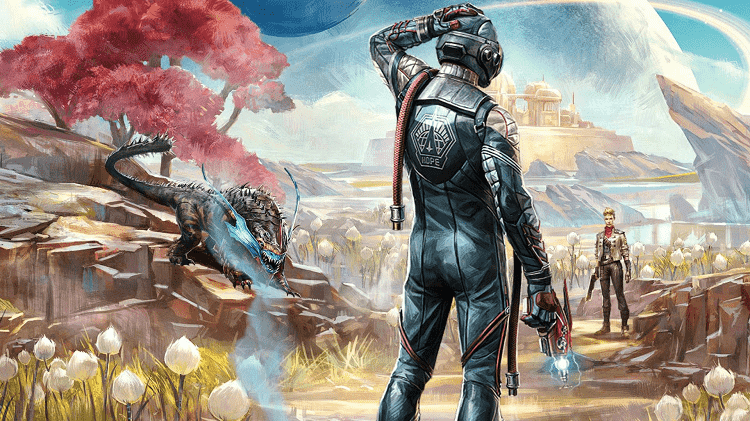
The Outer Worlds begins with the player’s character being revived by a mad scientist after dying along with hundreds of others on a drifting colonist ship. This opening introduces the player to the game’s new setting, the Halcyon solar system.
Halcyon is ruled by a group of mega-corporations known collectively as the Board. Nearly every location in the solar system is owned and operated by the Board, resulting in harsh working conditions, rampant abuse, and a chronic lack of individual freedom.
After being revived, the player starts on an adventure throughout the entire solar system, where they uncover a conspiracy at the heart of the Board and their iron grip over Halcyon.
Ultimately, the player gets to decide whether to reinforce the Board’s militant control over the system or to rebel and allow the colonists to live with newly achieved freedom.
Throughout the story, The Outer Worlds explores themes of individualism, late-stage capitalism, and the devastating impacts that unchecked profit motives can have on citizens.
It shows how the prioritization of corporate rights over those of the individual leads to slavery, oppression, and exploitation on unprecedented scales.
These themes are also explored through the game’s array of side quests. They frequently showcase the brutality of the corporations by having players interact with the individuals directly impacted by them.
This exposure allows the game to show off the insensitive side of its universe and illustrate what the players are fighting for should they decide to resist the Board.
However, a vital element of The Outer Worlds‘ writing is its satirical sense of humor. The Halcyon solar system is a dire place that nobody in their right mind would want to live in. This has the potential to make exploring it and the game’s heady topics very emotionally draining.
The constant injection of comedy into the game helps alleviate this while still giving the writing room to make its points and explore its themes.
However, I do wish that there was more variation in how the Board’s oppression was communicated to the player. While there is a lot of visual variety between locales, they stay very tonally consistent, with the game’s satirical critique being delivered through sarcasm that ends up feeling one note.
When the comedy is successful, which I think is the majority of the experience, it takes things to such a ridiculous extreme that it is impossible not to laugh at the absurdity. I also find the game’s ability to deliver its comedy without sacrificing world-building or lore extremely impressive.
It’s funny, but still feels like a real world that invites players to learn more about it. This is fantastic at giving the game its personality, fleshing out its universe, and giving characters their identities in the world.
Fallout: New Vegas
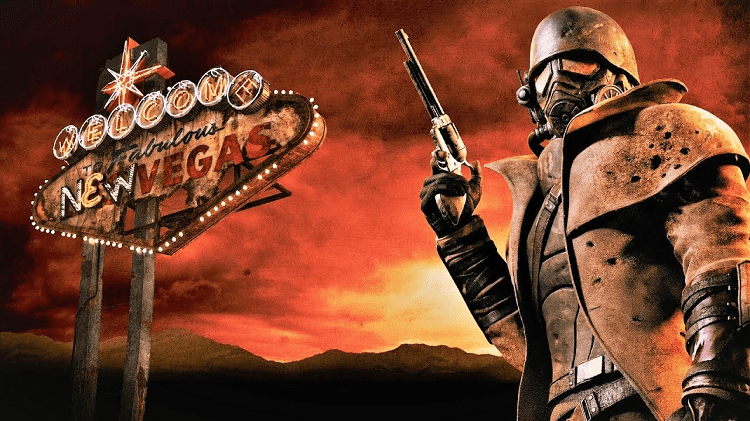
The main quest line of Fallout: New Vegas begins with the player being shot in the head as a man steals a package they were paid to carry across the wasteland.
They manage to survive the gunshot thanks to the help of a doctor, allowing them to hunt down the man responsible and learn the reason behind their attempted murder.
This is a great opening because it differentiates it from the other games in the series that begin with the player emerging from a vault. I love this approach because of how it gives the player a place in the world right from the beginning.
It also sets up personal stakes that don’t define the player’s character at all, which is fantastic for those that enjoy roleplaying different types of characters.
Sometimes I don’t want to play a character that would have had a kid before or that would care about finding their dad, and New Vegas‘ approach facilitates that.
The player’s quest for revenge results in them getting caught up in a massive conflict for control of the Mojave Wasteland that is being fought by numerous factions. Each faction that plays a role in the story serves as an opportunity for the story, and thus the players, to explore different political philosophies.
From fascism to exploitative libertarianism, the game does an incredible job of exploring numerous topics. In the end, the player also plays a crucial role in which faction wins, effectively deciding which political structure should be used to rebuild human civilization in the region.
Every time I play through New Vegas I am impressed at just how elegantly it blends these elements together. The variety helps create a cast of unique factions and characters for players to interact with while also naturally exploring its topics through them.
My take on this is that it is one of the best ways to integrate themes into a game’s narratives, as players that don’t want to engage with them don’t have to, but players that do, like myself, have a lot to consider.
Some of the side quests in New Vegas further explore the themes and elements established in the main quest, but there is also a ton of variety.
This helps the game to explore other topics, from the heart-wrenching to the ridiculous, allowing the game to support a wide variety of tones, which makes it a dynamic experience emotionally.
The game’s exceptional writing also supports the tonal variety. It manages to effortlessly maintain the dower state of the world without ever feeling entirely hopeless.
The characters that players meet throughout the game are also home to fully realized and distinct personalities that allow them to highlight different aspects of the world and their culture.
New Vegas also provides a great look at the post-post-apocalyptic genre. It is classified as such because it shows humanity starting to bounce back after the nuclear apocalypse. It isn’t a world where people are still becoming irradiated, scrounging for food every day, or struggling to survive in small family-sized groups.
Instead, players get to watch as civilization is in the early stages of being rebuilt. Settlements and cities have been constructed with laws, supply chains, and communities.
People can communicate with one another over great distances with couriers, and electricity is available to run the pieces of technology that have survived everything thus far.
This element of the setting is at the core of most Fallout games and helps them feel like a great new take on the apocalypse. Most apocalyptic games are focused on the events directly following or during the apocalypse, so seeing humanity as it is bouncing back is really exciting to see.
World
The Outer Worlds

The Outer Worlds is set in the Halcyon solar system. Halcyon is at the center of a colonization effort led by a conglomerate of mega-corporations known as the Board.
They ultimately control the solar system, acting instead of governments. Players visit a handful of unique planets and an orbiting maximum security prison throughout the game.
The areas of the game are separated from one another, requiring players to fly their ship to them, meaning that the game isn’t a traditional open world.
While this does keep the game’s spaces from feeling as continuous and massive as other open-world games, it does allow each environment to have its distinct environment and aesthetic.
This approach enables The Outer Worlds to have an incredible amount of variety in its environments, making exploring the game more rewarding and exciting. From the claustrophobic confines of a metal prison to dense alien jungles and congested streets of a metropolis, there is plenty to see throughout one’s playthrough.
This works wonders to make the player feel like they are really exploring an expansive setting rather than just a small area in a larger world. It also helps give the game’s setting its own identity rather than feeling derivative when compared to the likes of other classic sci-fi universes like Mass Effect or Halo.
The different environments also enable the game to feature a more extensive cast of enemies for players to fight. The wildlife and factions, in part, define each location that players visit, allowing them to feel more like they are traveling across a diverse solar system.
The variety is great to keep players experiencing new combat scenarios while also testing the adaptability of their characters. It is disappointing how little variation Outer Worlds has in its builds, but having a higher variety of enemies does help to some degree.
The world of The Outer Worlds is also extremely colorful and is used to illustrate how the oppressive control of the Board impacts those living under them. Most buildings are highly barebones or rundown, while the need for always greater profits has stifled technological innovation.
The impoverished living conditions of most commoners are then contrasted by the lavish abodes of the elite, who flourish in the comfort of their unlimited power and influence.
The integration of the game’s themes into its world design is really well done. It subtly rounds out the game’s talking points without battering the player over the head with them.
Fallout: New Vegas
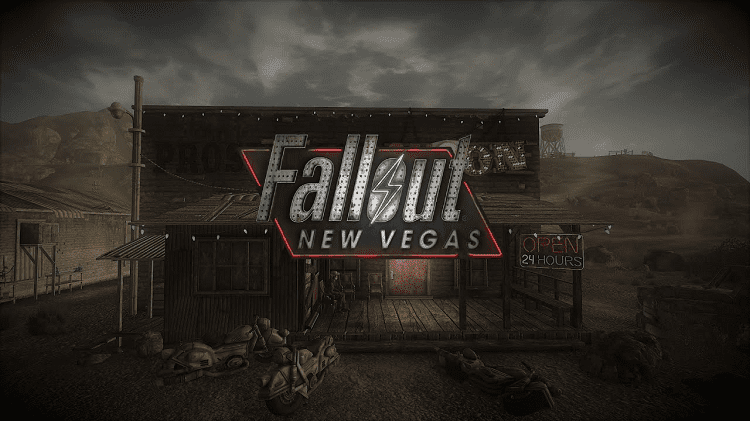
Fallout: New Vegas is set in the Mojave Wasteland of Nevada, filling its map with desert. However, that is not to say that it is empty or boring. It is still filled with exciting landmarks, nascent civilizations, and small settlements of survivors trying to make do.
I’ve found this to allow the time players spend in the empty space of the map to serve as tonal construction or highlighting for the more populated areas rather than being boring. This is great, and helps players really feel like they are a solo wanderer trying to survive in a desolate world.
The map is also covered in the ruins of life before the nuclear apocalypse. I love how most people still live in the shelled husks of old buildings, while those who don’t tend to live in dilapidated homes built with the broken materials left behind by the last war.
It helps make the world feel familiar despite its fictionalized timeline, helping you form greater connections to it since it can remind you of the real world.
However, this is not to say that there isn’t variation. Even throughout the desert, there is a ton of diversity in the landmarks players come across. The more common environments are also contrasted by the industrial vaults, the occasional oasis of life, and the vibrant lights of New Vegas itself.
I still have fond memories of reaching New Vegas for the first time and being blown away by its scale and visual shift from the rest of the game, and I don’t think I will ever forget the experience.
The world of New Vegas is also open to the player from the beginning of the game. From the moment players are given control over their character, they can go in any direction they want and can even avoid progressing through the main quest if they wish. This gives the player a greater sense of control and freedom and helps make the world feel more alive and realistic in its seamlessness.
Companions
The Outer Worlds
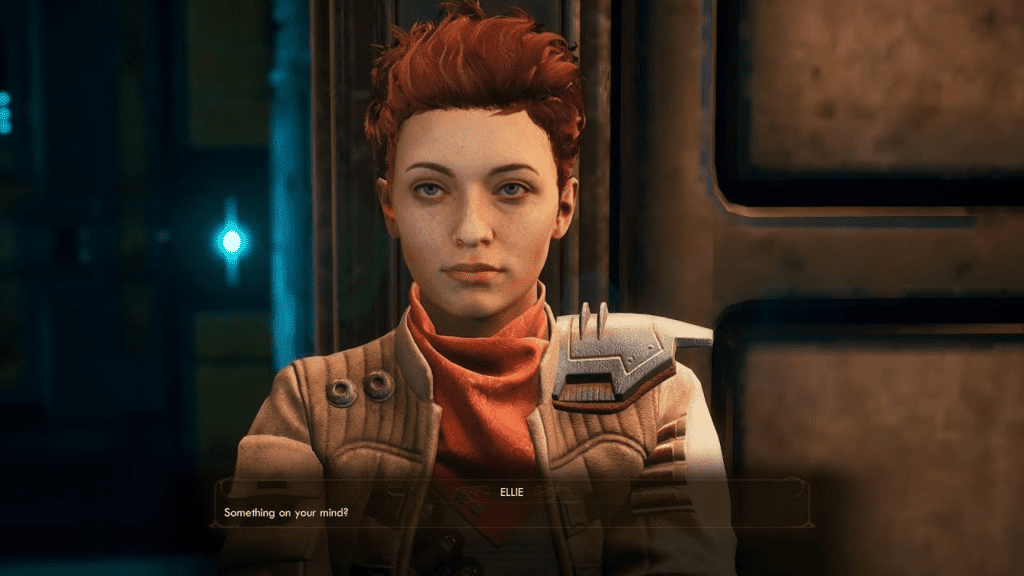
Companions in The Outer Worlds can join the player’s team at various points throughout the game. They have fully realized characters with skills, preferences, personalities, and even unique skill trees.
Players can only have one companion with them at a time, with each one having a different playstyle to augment the player’s own.
Companions in The Outer Worlds also have personal quests, so, conveniently, players can switch between companions at any time. This is because once a companion joins the player, they take residence on the player’s ship and wait there when not used.
As players use companions, their opinion of the player also changes based on their decisions. This can allow the player to get closer to them or can see them leaving the player altogether.
Companions in The Outer Worlds also each have a unique skill tree that can be leveled up, opening up further customization options for how the companion improves throughout the game.
Unfortunately, the companions in The Outer Worlds do suffer from a lack of interesting personalities and writing.
Instead of wanting to play with certain companions to learn more about them, like I do in other Obsidian games such as Pillars of Eternity, I usually just pick the one with the right playstyle for my character. Even if they annoy me to no end like Parvati.
Fallout: New Vegas
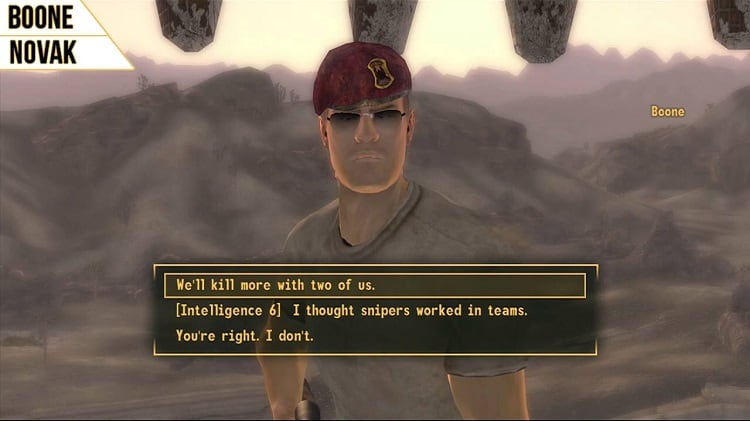
Players get companions in Fallout: New Vegas by finding them throughout the world and interacting with them. They can be challenging to find, and they will only join the player on their adventures if the player wins them over, usually by completing an associated quest.
Once a companion joins the player, they will follow them around the world, help them in combat, and comment on the player’s actions and choices. They work well for giving the player reactive tidbits of information and background to sections of the world.
However, I do find them to be pretty shallow most of the time. They are interesting during their associated quests, but the sheer scope of New Vegas prevents them from having consistently interesting opinions and contributions throughout the game.
The player also has more limited control of their companions’ development. The player can give them new gear to equip, but how they act and change as they level up is entirely out of the player’s hands. This is fine, but I think it could have improved the game as a whole if the system was expanded.
Character Progression
The Outer Worlds
Players can level up skills and unlock perks when they level up in The Outer Worlds. For any skills under level 50, they are leveled up in groups, allowing players to experiment with them in the early stages of the game.
Once they are above level 50, however, they have to be leveled up individually, pushing players to specialize as they approach the game’s final stages.
I love this system because of how it encourages experimentation early on before pushing players to really consider what parts of the game they like the most and want to stick with by the end.
The player’s skills then influence what gear players can equip and how effective that gear is. Access to better gear also plays an essential role in character progression, but there needs to be more variety in gear available.
I love it when games end up having different gear with real identity to them, but in Outer Worlds getting a new type of gun is just an exercise in chasing larger damage numbers.
Every few levels, players also get to unlock a new perk. Perks are buffs that help players tailor the game to their play style. This includes effects like increasing maximum carry weight, boosting the player’s health, or giving them bonuses when they don’t have a companion.
Overall, the game’s perks are on of my least favorite parts. They are primarily stat increases, with few meaningful changes to how players approach the game or any interesting new mechanics.
This makes picking perks very straightforward. I would much rather have seen the game have perks with more interesting implications than just incremental stat buffs.
While playing through the game, players will also have the option to take on flaws. Flaws give players negative aspects of their character that they have to deal with, such as taking more damage from particular enemy types. However, accepting a flaw grants players an extra perk point that can be used to improve them further. This system has a lot of potential, but with how poor the game’s perks are I’ve found it never as compelling as it could be.
Fallout: New Vegas
Leveling up in Fallout: New Vegas allows players to increase some of their skills and rewards them with a perk every two levels. Each skill is associated with one of the attributes players allocate points to when starting their character.
While skills are the bedrock of character progression in New Vegas, it is the perks that really define a playthrough. There are tons of perks to choose from and they cover a great range of options.
There are new mechanics like allowing players to eat corpses, abilities like being able to intimidate NPCs in dialogue, and fun improvements like having an NPC arrive and attack with the player when using V.A.T.S.
A character’s progress can also be measured by their equipment. There is a wide range of equipment in New Vegas, with each weapon featuring its own characteristics and personality.
Each weapon works best in particular situations, making it feel more rewarding to collect as many as possible. On top of that, players can also customize and upgrade their weapons with attachments, helping tailor their performance to their unique needs and preferences.
The character progression present in New Vegas is a lot better than Outer Worlds because of how flexible it is. It gives players interesting choices to make throughout an entire playthrough, and facilitates players to make wholly different builds..
This is one of my favorite parts of the RPG genre, and New Vegas has a strong implementation of the system.
Which is Better?
Winner: Fallout: New Vegas
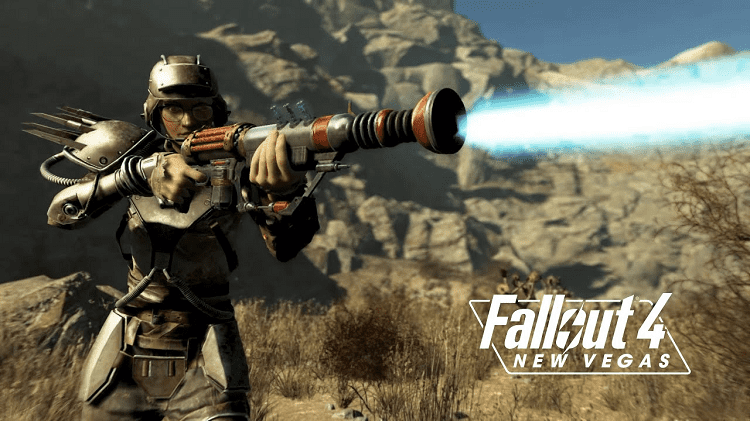
Ultimately, Fallout: New Vegas manages to be a more well-rounded and consistent experience to me. Its world is filled with interesting characters and locations to explore, and its detail and seamlessness help it trump the more diverse offerings in The Outer Worlds.
I’ve also found its cast to be better characterized and more interesting. Its character progression systems are also deeper, supporting a wide variety of builds and options for players to experiment with.
Finally, the game’s writing also supports a wider range of well-explored themes and experiences throughout both its main and side quests.
Best Alternatives
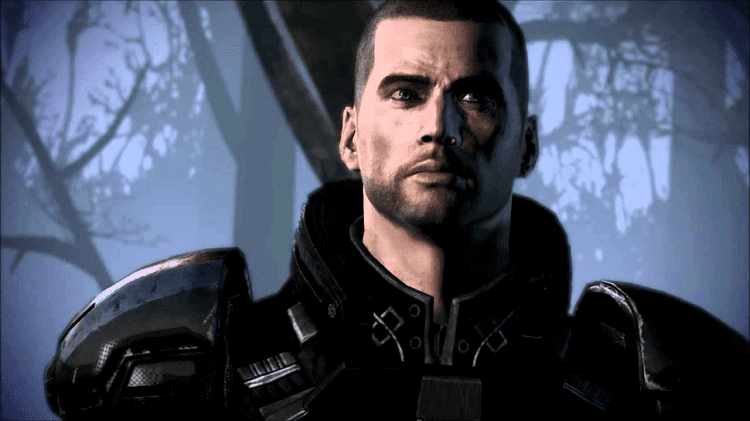
The Outer Worlds
- Mass Effect
- Knights of the Old Republic
- Deus Ex
- System Shock 2
- Guardians of the Galaxy
- Prey
- Cyberpunk 2077
Fallout: New Vegas
- Fallout 3
- Oblivion
- Vampire: The Masquerade – Bloodlines
- Wasteland 3
- Metro Exodus
- Chernobylite
- Disco Elysium
FAQs
Question: Is Outer Worlds as good as Fallout: New Vegas?
Answer: There is a lot to love about The Outer Worlds, but its mechanics never quite reach the standard set by the depth and variability found in New Vegas.
Question: Is Fallout: New Vegas the best Fallout game?
Answer: New Vegas is widely considered one of the best games in the series, with many considering it the very best. It is arguably the best entry since Bethesda acquired the IP thanks to its fantastic writing and the deep mechanics at the core of its gameplay experience.
Question: How many endings does The Outer Worlds have?
Answer: There are three endings that players can experience at the end of The Outer Worlds depending on what choice they make during the game’s final quest.
Conclusion
There is a lot for RPG fans to love about both The Outer Worlds and Fallout: New Vegas. Both games take a slightly different approach to their shared genre, with New Vegas putting a larger emphasis on player freedom while Outer Worlds focuses primarily on its story.
I can’t recommend either game enough, but if you can only pick up one, I would suggest going with New Vegas.

